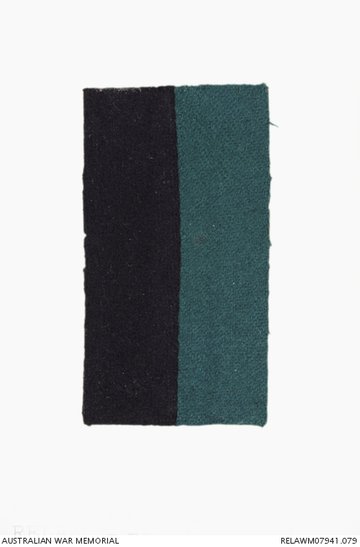
53rd Battalion
The 53rd Battalion was raised in Egypt on 14 February 1916 as part of the "doubling" of the AIF. Half of its recruits were Gallipoli veterans from the 1st Battalion, and the other half, fresh reinforcements from Australia. Reflecting the composition of the 1st, the 53rd was predominantly composed of men from the suburbs of Sydney. The battalion became part of the 14th Brigade of the 5th Australian Division.
The battalion arrived in France on 27 June 1916, entered the front line for the first time on 10 July, and became embroiled in its first major battle on the Western Front, at Fromelles, on 19 July. The battle of Fromelles was a disaster. The 53rd was part of the initial assault and suffered grievously, incurring 625 casualties, including its commanding officer, amounting to over three-quarters of its attacking strength. Casualty rates among the rest of the 5th Division were similarly high, but despite these losses it continued to man the front in the Fromelles sector for a further two months.
Source: Australian War Memorial
Fromelles
On 8 July they began a 30 km march to Fleurbaix and were settled into billets there on 16 July.
Early the next morning, the 53rd were moved straight into the front lines for an attack, but it was cancelled due to bad weather. They remained in the trenches in relief of the 54th.
On the 19th, heavy bombardment was underway from both armies by 11 AM. At 4 PM the 54th rejoined on their left. All were now in position for battle. The Zero Hour for advancing from their front-line trenches was to be 5.45 PM, but the Germans knew this attack was coming and were well-prepared. They opened a massive artillery bombardment on the Australians at 5.15 PM, causing chaos and many casualties.
The main objective for the 53rd was to take the trenches to the left of a heavily armed, elevated German defensive position, the ‘Sugar Loaf’, which dominated the front lines. If the Sugar Loaf could not be taken, the 53rd and the other battalions would be subjected to murderous enfiladed fire from the machine guns and counterattacks from that direction. As they advanced, they were to link up with the 60th and 54th Battalions on their flanks.
The Australians went on the offensive at 5.43 PM. They moved forward in four waves – half of A Company & B Company in each of the first two waves and half of C & D in the third and fourth. They did not immediately charge the German lines, but went out into No-Man’s-Land and lay down, waiting for the British bombardment to lift.
At 6.00 PM the German lines were rushed. The 53rd were under heavy artillery, machine gun and rifle fire, but were able to advance rapidly. Corporal J.T. James of C Company (3550) reported:
“At Fleurbaix on the 19th July we were attacking at 6 p.m. We took three lines of German trenches”
Source: Australian Red Cross Missing and Wounded Files Major Victor Sampson page 5
The 14th Brigade War Diary notes that the artillery had been successful and “very few living Germans were found in the first and second line trenches”, but within the first 20 minutes the 53rd lost ALL the company commanders, ALL their seconds in command and six junior officers.
Source AWM C E W Bean, The AIF in France, Vol 3, Chapter XII, pg 369
Some of the advanced trenches were just water filled ditches, which needed to be fortified by the 53rd to be able to hold their advanced position against future attacks. They were able to link up with the 54th on their left and, with the 31st and 32nd, occupy a line from Rouges Bancs to near Delangre Farm. However, the 60th on their right had been unable to advance due to the devastation from the machine gun emplacement at the Sugar Loaf.
They held their lines through the night against “violent” attacks from the Germans from the front, but their exposed right flank had allowed the Germans access to the first line trench BEHIND the 53rd, requiring the Australians to later have to fight their way back to their own lines. By 9.00 AM on the 20th, the 53rd received orders to retreat from positions won and by 9.30 AM they had “retired with very heavy loss”.
Source AWM4 23/70/2 53rd Battalion War Diaries July 1916 page 7
Of the 990 men who had left Alexandria just weeks before, the initial count at roll call was 36 killed, 353 wounded and 236 missing. “Many heroic actions were performed.”
Source AWM4 23/70/2 53rd Battalion War Diaries July 1916 page 8
To get some perspective of the battle, when Charles Bean, Australia’s official war historian, attended the battlefield two and half years later, he observed a large amount of bones, torn uniforms and Australian kit still on the battlefield.
The final impact of the battle on the 53rd was that 245 soldiers were killed or died from their wounds and, of this, 190 were not able to be identified.